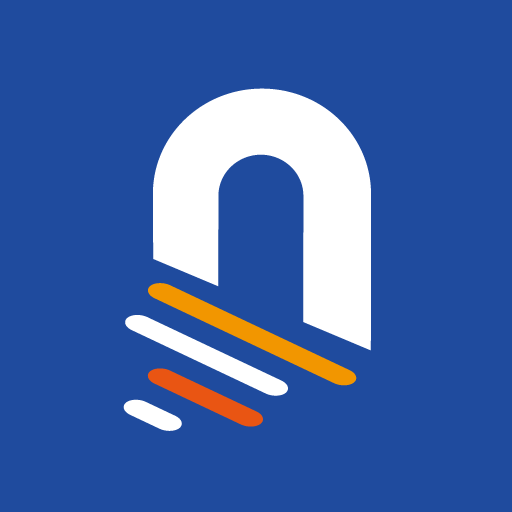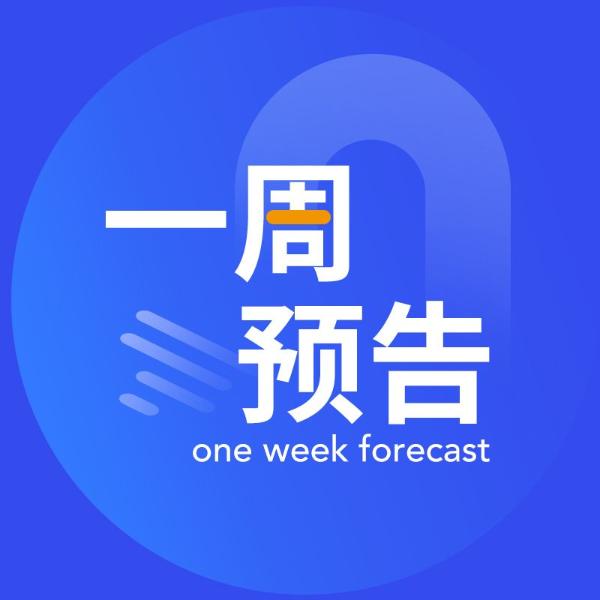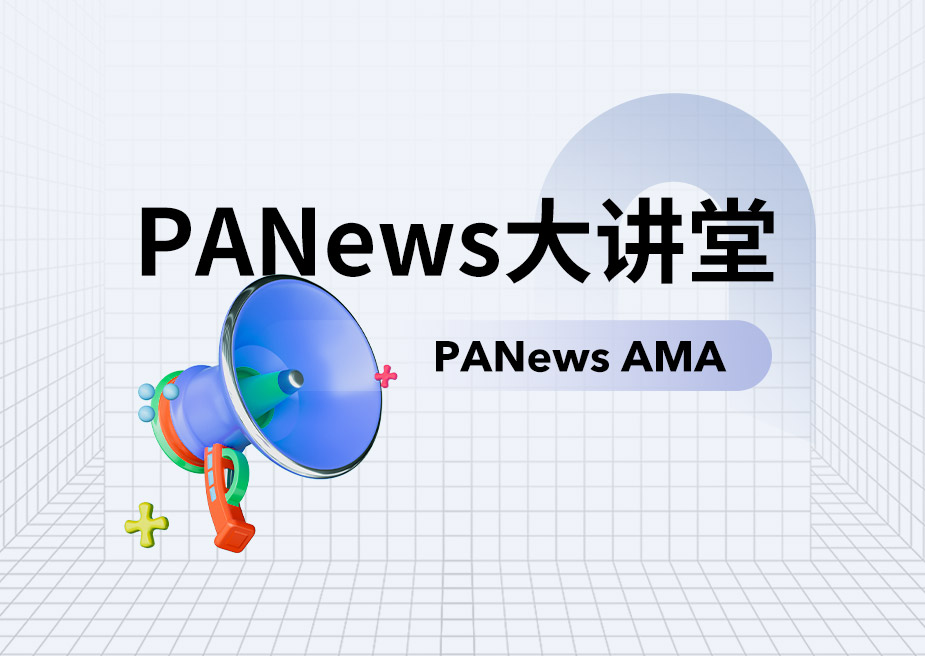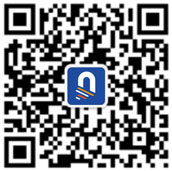Unification的创始人Neyma Jahan是IoT和互联网领域的连续创业者,其在2017年投身区块链,Unification在去年下半年获得了海外知名基金Yellow Captial 和Gems Captial 的投资和孵化。相比很多还处于概念阶段的公链,Unification已经与欧洲和拉美国家的很多企业和政府合作开发应用。其中不乏政府准备利用其底层技术开发稳定币。
区块链解决了海外企业和政府的哪些痛点?如何驱动公私混合区块链模型大规模被企业、政府等机构应用?3月12日晚间,Neyma Jahan做客PANews,为大家解锁海外传统行业拥抱区块链的N种姿势。
Speaker:
Neyma Jahan, Founer & CEO of Unification
With a lucrative background in direct response marketing, Neyma Jahan moved into the IoT space in 2013. In 2017 he stepped down as CEO and made the full transition to the blockchain space, launching the Unification Foundation.

对话实录AMA Recap:
PANews:您是连续创业者,之前在物联网领域有着丰富的经验,为什么会想到转而进入区块链领域创业呢?有什么样的契机?
l know that you are a serial entrepreneur, and has extensive experience in the IoT. then what makes you starting your business in blockchain sector? What inspired you to do so?
Neyma:We began the project with the vision for data interoperability- meaning that in governments and enterprises, there are so many different data silos that cannot communicate with each other- So for instance your government records are kept in a separate location than your health records and each of these data points is owned by the holder- and not by the end consumer- we originally developed out Unification to be a 2nd layer for data- interoperability- which is the true strength of the blockchain/ As we developed this out further - we understood there was a main problem that all 1st layer native blockchain solutions had the same problem -that was they all operated on a speculative coin. So say you have your identity on the Blockchain - but depending on which KOL spoke about the project today maybe the price of the coin went up and then this made it cost twice as much to access your data/ identity.
This was not acceptable so from there we expanded further to offer a 1st layer public/private blockchain that is not dependant on speculation coin price.
我们开始Unification这个项目的愿景是实现数据互用——在政府和企业中,有很多不同的数据库,彼此却不能通用。例如,你的政府记录和你的健康记录分别被独立保存,并且这些数据的拥有者并不是你本人,而是数据的持有者。我们最初开发Unification的目的是想建立一个数据的layer2,实现互用性,这才是区块链真正的优势所在。而随着更进一步的开发与探索,我们明白到一个主要的痛点——第一代区块链解决方案也有着同样的问题——它们开发所基于的代币币价投机性太大。假设区块链上有你的身份信息,但是如果有个KOL谈论了这个项目,其币价突然上涨,可能你访问自己身份数据的成本就会增加一倍。
这样的情况让人很难接受,所以我们进一步发展了这个愿景,即提供一个底层的公私混合区块链,并且其代币并不具备投机性。
PANews:听说您正在香港参加区块链周,也作为嘉宾分享了传统企业、政府机构应用区块链的案例。中国的区块链行业一直在讲“脱虚向实”和“落地应用”,最近摩根大通也在区块链方面有应用,除了金融行业,还有哪些领域可以很好的应用区块链技术?您可以分享几个海外的应用案例吗?
Chinese investors are always interested in projects which having real-life use cases, In addition, even JP Morgan has made some movements, planning to get a slice of cake from blockchain industry. Expect to the JPM case in financial sector, in what other areas do you think the blockchain technology could be applied? Could you please share some overseas Unification cases of blockchain application with us?
Neyma:Blockchain is always useful to bring Trust to an inhernetly trustless enviroment. Simply put - it is to force people to be honest with each other. For instance one case we are developing in Latin America is to combat insurance fraud. in this country there is a major issue with patients and doctors double billing multiple insurance companies for the same treatment and collecting the money. We are getting all the major insurance companies to come together and maintain a Workchain together where each patient/doctor is assigned a unique identity and their billing and conditions are tracked. in this way all of the trustless entities have a way to trust each other through distributed ledger technology.
区块链有助于为固有缺乏信任的环境注入信任。简单地说,就是迫使人们彼此诚实。例如,我们正在的开发的拉丁美洲的一个案例——打击保险欺诈。在这个国家,有一个主要的问题,病人和医生为同一种治疗向多家保险公司开出双倍的账单,以谋求保费。我们正在试图联合主要的保险公司,共同运作一个Workchain,在这个Workchain,每个病人/医生都被赋予一个独一无二的身份,且他们的账单和病情都会被追踪。如此,所有不可信的实体都可以通过分布式账本技术彼此信任。
Another use case we are developing is in competitve motorsports. So in this industry - technical compliance checks pre and post race for the vehicles is very important to combat against cheating. by having each team maintain a node on the semi-private blockchain - then mechanical ratings are forever stored and cannot be covertly altered. there are many more use cases, but these are the first two that come to mind.
另一个正在开发中的案例是关于竞技赛车。在这个行业中,赛前和赛后的车辆技术合规性检查对于打击舞弊行为是非常重要的。通过让每个团队在半私有区块链上维护一个节点,那么机械评级将永远存储,并且不能被暗中篡改。其他还有许多应用案例,这是我最先想到的两个。
PANews:我了解到企业主要是在Workchain上搭建应用,Unification被清晰的分为主链(Mainchain)和Workchain ,他们分别要承担怎样的角色呢?Workchain与侧链/协议层有什么区别呢?
We've learnt that enterprises are building applications on the Workchain. We already know that unification brings two concept: Mainchain and Workchain, but what's the difference between them? And how do you tell the difference among Workchain, Sidechain, and Protocol?
Neyma:good question - Mainchain is a fully public blockchain that uses DSG (distributed stake governance) it is 100% public and immutable and validated by the community. We maintain no special ownership of Mainchain.
这个问题问地非常好。主链是一条完全公开的区块链,它采用DSG(分布式权益治理)模式,并且是100%公开的,不可变的,并由社区验证。我们对主链没有特殊的所有权。
Workchain is a version of a sidechain that allows semi-private deployment amoung a community. for instance in the earlier example for the motorsports - say there are 12 teams in a racing circuit - we would for instance create a workchain with 13 nodes- one for each team and one for the governing body of the sport. Then this Workchain will produce blocks in this semi-private environment and send the headers of these blocks to the PUBLIC Mainchain. once recorded on the mainchain - this promises that they cannot be altered by anybody and it goes on the public permanent record
(i should note that depending on the configuration -that actual data can remain private and sometimes it is just an encrypted hash of data that is passed to mainchain)
工作链是侧链的一种形式,其允许用户在社区中进行半私有部署。例如,在前面提到的赛车运动示例中——假设在一个赛车赛道中有12个团队——我们将创建一个包含13个节点的Workchain——每个团队一个节点,运动管理机构一个节点。之后,该Workchain将在这个半私有环境中生产区块,并将区块头发送至主链上。一旦被记录在主链上——它们将不能被任意篡改,并且会被永久记录。
(我需要指出,根据结构配置的不同,有时实际数据可以保持私有性,有时它只是传递给主链的加密数据散列。)
PANews:我了解到,很多企业在引用区块链技术的时候会担心代币炒作,网络拥堵等问题,unification是如何解决这一问题呢?
We know that many enterprises choose to do Dapps when they decide to adopting blockchain technology, but they have met many problems such as token speculation, congestion of the public chain and so on. How does Unification solve such kind of problems?
Neyma:We think the blockchain industry has an illness because many companies are so focused on the value of the coin price , that they actually forget practical usefulness. Very clearly the customer of Unification is the enterprise or government and not the coin speculator.
我们认为区块链行业目前普遍存在这个问题,因为许多公司过于关注币价,以至于忘记了它的实际用途。很明显,Unification的客户是企业或政府,而不是代币投机者。
Because of this instead of building a “DAPP” on a public network -a developer will deploy a Workchain - this is mostly private and allows users of the workchain to transact without fees. For example we have a Electronic health records Workchain in Brazil which has 2 million users. Imagine how impossible this will be if 2 million users in brazil had to HOLD Ethereum and use it to access their health records. It just wouldn't work.
正因为如此,不同于在公链上构建一个“DAPP”,开发人员则是部署一个Workchain(且主要是私有链),并且允许Workchain的用户免费交易。例如,我们在巴西的一个电子健康记录Workchain,拥有200万用户。想象一下,如果这200万巴西的用户只能通过持有eth,并使用其访问他们的健康记录,这根本行不通。
instead we make it so that the end users don’t have fees and instead the masters of the Workchain pay a small fee in UND everytime they send a finished block to public Mainchain. This makes it so that enterprises can operate in a fixed fee and predictable way that allows for unlimited horizontal scaling
不同的是,像我们现在的做法,终端用户无需支付费用,而Workchain拥有者在向主链发送末端区块时只需支付少量费用即可。这使得企业能够以固定的费用和可预测的方式运营,同时保证无限的水平扩展。
PANews:Unification的治理模式是怎样的?主链的节点会有怎样的奖励,将来会进行节点竞选吗?
What is the Governance model of Unification? What kind of reward will the nodes of the mainchain get, and will there be a “node vote” in the future?
Neyma:We use a system for Mainchain called DSG or Distributed Stake Governance. It is designed in a way that users of the system are inherently vested in its success. Simply put, every 72 hours a “vote” is held and the top 96 wallets that place UND in stake will receive a medallion that allows them to validate blocks.
我们在主链上建立了一个叫做DSG(分布式权益治理)的系统。用户可以基于这一系统获取授权。简单地说,每72小时会有一次投票,排名前96并持有UND的钱包会得到用以激活区块的奖章。
Being a validator allows them to collect network tax and also to receive block rewards. You can check the white paper- but I think in the first year there is 8 % inflation and then it reduces to smaller amounts year by year as the token circulates into utility. This system was designed with the help of numerous economics experts to ensure proper vesting within the system.
作为验证者,用户可以收取网络税并获取区块奖励。具体可参见我们的白皮书——不过我认为在第一年会出现8%的通胀,而随着代币逐步进入应用阶段,相信这个通胀率会随之降低。为确保授权不出问题,这一系统由众多经济学专家参与设计。
The 96 Validators operate on PBFT consensus which requires ⅔ of agreement to make a decision.
96个验证者将基于PBFT(Practical Byzantine Fault Tolerance,拜占庭容错)共识运作,只有达成一致才能做出决策。
PANews:您之前讲了很多应用案例,其中也有政府机构相关的,现在越来越多的政府将区块链应用到管理中,但是政府在选择技术合作伙伴的时候无疑会比较严格,你们对吸引或是说服服政府机构合作方面,有什么自己的心得么?
I notice that there are some government-relevant projects by Unification. And we know that more and more governments are trying to adopt blockchain technology into their governance, but as we know when a government select a partner, seems the standards will be stricter than enterprises. Do you have any tips on how to attract or convince government organizations to cooperate?
Neyma:The advice I give always is to understand the needs of your customer and why they would need your product. In governments case- it is 2 reasons - 1 is to de-silo data- so to get it in a single place 2 - and more importantly is to combat fraud and corruption. for instance we are in a bid for a government bank to issue a stable coin on a Workchain - this will be used to pay government contractors and redeemable at the bank. This way all of the money can be tracked everywhere that it goes. This is an obvious solution. So again my best answer is to understand the needs of your customer.
For now, education and outreach is the key - we have to show that blockchain is not just about "coins" but really about technology.
我建议大家一定要了解你的客户的需求,以及他们为什么需要你的产品。就政府方面来说,有两点:1,是不要把数据存储在一个独立的地方(de-silo data);2,也是比较重要一点,是打击欺诈和腐败。例如,我们正在争取邀请一家政府银行在Workchain上发行稳定币——用于支付政府供应商的工资,且可在银行兑换成法币。这样一来,所有的钱款都可以被追踪。这是一个显而易见的解决方案。所以我认为最好的答案还是理解你的客户的需求。
目前,教育和推广是关键 - 我们必须证明区块链不仅仅是关于“代币”,而是关于技术。
PANews:Unification一直是个稳扎稳打的项目,在2019年你们在技术和落地方面有着怎样的规划?你认为今年会有大量的企业开始选择拥抱或者应用区块链技术吗?
Unification is truly a practical project. I really keen to know what kind of plan do you have in 2019 in terms of technology and application? Do you think that a large number of companies will choose to embrace blockchain technology this year?
Neyma:I think it is obvious that blockchain is the future- but we have some healing to do because when many hear about blockchain - they think about coins. Blockchain can use coins, but it is not needed for all usecases. AS we continue our outreach and education we think that blockchain will literally expand to EVERYWHERE - but the reality is that the world will be using blockchain daily within a few years but likely not know it. We consider ourselves the operating system for the world- like Apple or Microsoft. It is just there and a part of our life, but no particular big deal to point out.
我认为毋庸置疑的是,区块链代表着未来的趋势,但我们仍需做一些努力和改变。因为当很多人听到区块链时,首先想到的还是代币。区块链需要使用数字货币,但并非所有应用都需要代币。继续延伸,我们认为字面上来说,区块链可被扩展始用在任何地方。但现实是,在未来几年内区块链将会被日常使用,但可能大家并不真正了解它。我们认为Unification是为全世界服务的操作系统——就像苹果或微软一样。它就在那里,是我们生活的一部分,但并不是什么值得特别提及的事。
PANews:不知您自己有没有计算过至今已经是创业的第几个年头了,区块链创业和之前的创业有什么不同吗,区块链作为一个“颠覆性”技术,是否挑战更大?作为一个创业老兵,对于那些摩拳擦掌想进入区块链领域创业的人有什么建议吗?
Have you ever counted how many years since you first started your own business? Are there any differences between being a blockchain entrepreneur and other industries? Does blockchain brings in more challenges? Lastly, do you have any advice or would love to share any experience to those freshman startups?
Neyma:Again you must always ask yourself who is your customer? And truly ask that beyond easy talking points. When I say customer I mean the person who will be giving you money. Is it the investor, the speculator? or is it the end user? I can tell you most projects - the “customer” is the investor or speculator - If this is your customer then that is ok - but know that. If you actually want to build something useable and useful then you need to ask yourself- how will it be built and how will you get people to use it? Just having a good idea and finished product isn't’ good enough and most blockchain startups forget that Biz Dev is everything!
同样的,创业者必须先问自己一个问题:你的目标客户是谁?一定要认真思考这个问题的答案,不能敷衍了事。所谓“客户”,是指那些将会花钱消费你产品的人——他们到底是投资人、投机者、还是终端用户?坦白地讲,多数项目的目标客户都是投资人或者投机者,如果投资人或者投机者就是你的目标客户,这没问题,但必须自己心里有数。如果你的目标是切实做出实用的东西,那就必须要问问自己——怎么做?怎么让人们愿意用它?只有一个想法或者做出一个成型的产品都还不够,很多区块链创业者都忘了一点:业务拓展是最重要的!
Questions from the audience
Q: Have you ever counted how many years since you first started your own business?不知您自己有没有计算过至今已经是创业的第几个年头了?
A:Hmm - - I have failed alot and succeed a few times. When I succeed it is when I have clear vision from beginning to end. 呃...我失败了很多次,当然偶尔也成功个一两回。通常当我脑海中有明晰的蓝图时就会成功。
Q: You have 2 million users? How many transactions in that per day? Where can i see your live transactions?你们拥有2百万用户?那每天产生多少交易量啊?在哪里能看见这些实时交易?
A: if you mean for the Workchains - they are happening on Private chains and on our private mainnet- - public mainnet is coming later this year in Q3
如果你是指workchain上的交易,目前发生在私链和我们的私密主网上——公网今年第三个季度会上线。
Q: 你们是比较倾向于企业在workchain搭建私有链吗?这样做的好处是啥?
A: Ideal situation, companies take our code base and deploy on their own without our help. But the Mainchain/Workchain is like Linux. so some its hard to deploy on their own - so we consider ourselves like RedHat- there to help to deploy and to make positive revenue for doing so
理想情况是:公司可以独立使用我们的代码库自行部署,无需我们的帮助。但主链/Workchain其实类似于Linux系统,因此有些项目很难靠企业自行部署,我们就像RedHat一样,帮助企业来完成部署并从中获取一定收益。
Q: 我想问NJ,你们项目有拿到哪些机构投资呀,准备什么时候上交易所啊?What institution investment does unification get?when to prepare to get list on exchange?
A:We were funded privately by a few "real world" companies - Gems Captial and Yellow Capital (former GSR partners) are a few to name. The mandate for Unification is not to have a "quick coin" but rather to become instituional and have UND be the functioning long term backbone of blockchain. We are on one exchange now already - Digifinex under the UND symbol.
有几家“传统领域”的机构参与了我们的私募——其中包括Gems Captial和Yellow Capital(前GSR合伙人)。Unification的目标是提供功能服务而非发行”速成代币“,我们旨在让UND成为区块链领域长期运作的支柱型代币。目前已经上交易所了,Digifinex(D网)已经有UND了。
Q: How do you define success for yourself and your venture? What’s the end game?
对于您和您的团队而言,做到什么程度算成功?最终愿景如何?
A:We have Foundation side - which success is defined by enterprises deploying the Workchains - - and then these Workchains using the Mainchain. We want to have 100 new Workchains per month active is inital goal for the Consulting side- we like the end goal of RedHat where they just sold for 36 Billion Dollars to IBM - we think that is a good end goal for our consulting company. .But of course this means that blockchain must be adopted like Linux
从基金会的角度:成功的定义是有更多的机构在我们的workchian上面进行部署,并且这些workchain使用我们的主链。我们最初的愿景是每个月有上百个新的workchain被部署。从咨询公司的角度:我们以RedHat为最终目标,他们刚刚以360亿美元的价格卖给了IBM——这对我们的咨询公司来说是一个不错的结果。当然,实现这一愿景的前提是区块链必须像Linux一样被普及。
Q: Do you have a report on the kind of volumes you're processing on the private chains? 关于你们目前在部署的私链,有相关交易量报告可供参考吗?
A: No official report is prepared yet. However the private chains belong to the deployers - We do not own these so we can only report what they choose to make public. This is why blockchain is beautiful, things can be public or private!
目前还没有可公布的报告,因为私链是属于其部署机构的,我们没有所有权所以只能公布他们愿意公开的部分。这也正是区块链的魅力所在嘛,想公开就公开,想保密就保密!
Q: Do we really need private blockchains while traditional databases can do the job most of the time?
当传统的数据库能完成多数任务时,我们真的需要私链吗?
A: Let's use the example that we have a racing league with 10 teams. Maybe these teams don't trust each other and need mecaniacs to trust. In this case they make a distributed ledger with 10 nodes so it forces them to trust.
Even thou it is private, it is still forced to be immutable because everybody must get along as friends because of internal transparency
举个例子,现在有一个由10个团队组成的比赛联盟,但或许这些团队之间并不互相信任,需要建立互信机制。在这种情况下,他们选择建立一个包含10个节点的分布式账本以实现互信。虽然是私链,但也是强制不可篡改的,因为内部透明性要求所有人必须以友好关系共处。
Q: Do you have any development plans in China? 请问有考虑在中国发展吗?
A: We would love to depending on the correct partnership. If someone wanted to introduce us to an enterprise or goverment that can use our technology we can present to them - For now- we are very strong in Europe and Latin America.
如果有合适的合作伙伴,我们非常愿意在中国部署我们的生态。欢迎大家介绍中国的企业或政府机构来应用我们的技术。就目前而言,我们在欧洲和拉丁美洲的发展最为强大。
Q: Could you please share with us the whitepaper? 有没有白皮书可以分享一下?
A: For English version:http://go.unification.com/whitepaper白皮书是英文版的
A short Chinese site: https://unification.com/foundation/chinese中文版白皮书暂时没有,目前有个比较简单的中文网站可供了解。














